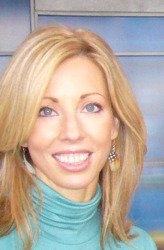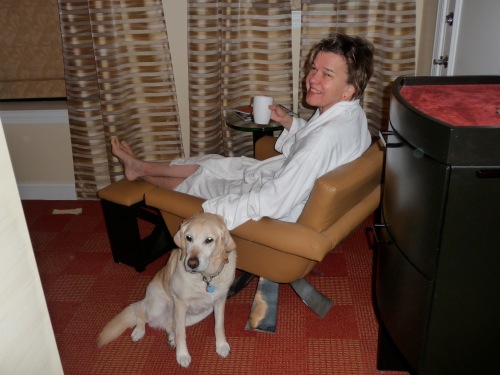Writing the Unseen
July 1, 2010 • 14 Comments • Posted in Beth Finke, blindness, Uncategorized, writingA few years ago I wrote a newspaper story about two Chicago women who’d won a trip to the Academy Awards. They bought new outfits at a studio on N. Elston that names dresses after old movie stars.
One of the women would be wearing the Grace. Glancing down at her own figure, she laughed and said, “Maybe when I wear it, it’s a Liz!
That quote was taken out. “Readers who recognize your byline know you’re blind,” the editor told me. “A blind person couldn’t have known that woman was glancing down.”
I had been standing right next to the woman when she said it. I’d heard her voice go down, then up. I’d felt her movement. I knew she’d glanced at herself.
The editor stood her ground. The accuracy of the story might be questioned. The quote had to go.
I used this anecdote, along with many others, during a presentation Tuesday night called Writing the Unseen. The session was the brainchild of young adult novelist Trina Sotira. Trina is working on her PhD in literature, and it was oh so good to have her up there presenting with me — her writing exercises gave the session some cred. Here from an email sent by a participant:
A great big thank you to Beth Finke and Trina Sotira for their great workshop on writing with the senses! It was amazing to learn from Beth the various struggles she encounters being a blind writer and yet tap into her writing in new ways by using senses other than sight.
I’ve been using my other senses for so long that I guess I forget how “amazing” my stories sound sometimes. Another example I shared Tuesday night was a profile I wrote about the highest ranking female brigadier general. I was relieved to hear a photo would appear with the story. No need to describe in words what the general looks like.
Wrong. The story needed visuals, the editor told me. Its part of good journalism.
I could have just asked the editor what the photo looked like and written that into the story. But that didn’t seem, well, like good journalism. So I picked up the phone and called the general. Her secretary answered. I told her my predicament and asked if she could tell me what her boss looked like.
She thought about this a long while. Finally she said, “All of us around her, even though we know she’s only five foot one, think she’s seven feet.”
It was a great quote. I used it in the story. My editor was happy. She gave me another assignment: Interview Miss America. But then she withdrew her offer, asking how a blind woman could write about a beauty queen.
This made me all the more determined. I showed up for the interview with my Seeing Eye dog and asked Miss America the all-important question. “What do you look like? If this question had come from any other reporter, it might have thrown her off. But Miss America had poise. Plus, she’d looked in the mirror once or twice in her lifetime.
Erika Harold is bi-racial, and pretty comfortable describing herself. “I have caramel-colored skin, long brown hair, and very expressive brown eyes,” she told me. “I think it’s very hard for people to tell exactly what I am.”
That quote went right in the story. I may not be able to see, but I’m still able to ask questions. Sometimes having a disability can make a person pretty resourceful. Asking colleagues to describe the person I’m interviewing — or asking the person to describe themselves to me — makes for good quotes. Which, in turn, can make for good journalism.


![bethaspca[1] Signing books at the ALA convention.](https://bethfinke.com/wp-content/uploads/2009/07/bethaspca11.jpg?w=150)

